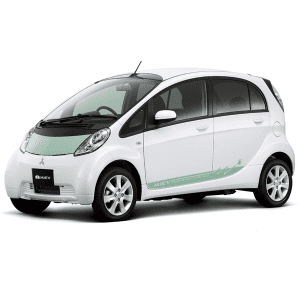Have you been looking at electric cars and just don’t like the idea of only being able to go 60 miles every time you drive your car? Mitsubishi thinks that 60 miles isn’t a problem, and is releasing the new MiEV. It gets 112 MPGe (Miles per gallon equivalent) and has a range of 61 miles. Don’t worry, there are other options.
Need more range? Don’t fret, according to the EPA the new Nissan Leaf can go 73 miles. Do you still think that isn’t enough? If you need range, diesel is the clear winner in any size vehicle. Mostly because they have bigger gas tanks, the big question is can electric get there and when?
Looking at alternative fuel vehicles, especially here on the West Coast, not too many things make sense. I am very loosely calling diesel an alternative fuel since so few cars use it, and biodiesel and gdiesel are genuine alternatives in limited supply.
My wife has a 2008 Diesel we had to buy in Texas because in 2008 almost nobody could make the new diesel smog requirements in California. We didn’t cheat, we were living there at the time.
The 2009 and newer diesel cars require expensive additions of blue urea every time you change the oil because there isn’t enough gDiesel yet. What is more amazing is how much that blue stuff costs. My neighbor with an Audi Q7 TDI tells me the blue stuff as we are calling it, is running him over $200 a month. Worse, he can’t find it anywhere but the dealer. Personally I would be tempted to use blue powerade and see what happens.
More recently we took the diesel to Lake Tahoe. Since there wasn’t any snow we took the long way. 478 miles door to door. At first the fact that we had over a quarter of a tank of diesel left looked good, but the higher price of diesel made it more expensive than driving a gas powered version. We looked for BioDiesel, but couldn’t find any in Reno and by the time we found the gDiesel in Reno, we had already filled up elsewhere.
Maybe someday diesel will make more sense in California, but right now, we don’t have the efficiencies of the European models so when you add in the higher cost of diesel fuel, and now the blue urea requirements make diesel less than ideal.
Electric clearly wouldn’t have made it either. We didn’t see one electric charging station until we hit Reno.
So what is the answer? Randy Jackson of SunPoweredEVs.com thinks it is the new batteries. The Tesla Roadster has a claimed range of 244 miles but many owners report 150 or so being the realistic limit. Still that is double the Nissan Leaf, and good enough to make it from Los Angeles to San Diego. Almost enough to make it to Las Vegas.
The Tesla S is said to have a one way range of 300 miles. So let’s say it realistically only hits 250. That is still pretty good for most people in a day. Unless you are going more than half way up the California Coast or taking a fun run to Las Vegas, 250 miles is pretty good.
Randy Jackson sent out this note today about a recent leap in battery technology, the lithium-air invented by our friends at IBM:
As batteries get smaller and lighter, electric cars can go further on each charge. It’s estimated the Tesla Roadster could go 1200 miles per charge if its lithium-ion battery was replaced with a lithium-air battery of the same size and weight. The range of an electric car is primarily determined by the capacity of the battery. A good rule of thumb is 4 times the usable kWh capacity of a battery equals the maximum range. For example, a 10 kWh battery in a Volt takes the car about 40 miles, a 24 kWh battery in a Nissan Leaf takes the car about 100 miles, and 53 kWh in a Tesla Roadster takes the car about 240 miles (a little more than 4 times 53 kWh because the Tesla is smaller and lighter than the other cars).
One difference between gasoline cars and an electric cars is how often the car is refueled, or in the case of an electric car, recharged. A typical gas car is refueled once a week, however, a typical electric car is recharged everyday, usually at night while the owner is home. Since it takes minutes to refuel a gas car standing outside in the elements and only seconds to plug in an electric car each night in the relative comfort of a garage, it’s very convenient to recharge everyday. It’s much the same as charging your cell phone, plug it in each night and it’s ready the next morning to use for the day. This means an electric car starts out each day with the capability to be driven its maximum range without recharging, and will be “topped off” by charging each night.
Randy really does drive a Tesla Roadster, and better yet, he put solar panels on his coastal home in order to charge it.

If you have two cars in your house, maybe the next one should be electric for popping around town. No more gas stations, just plug it in. Keep the other car for those cold and foggy mornings that you decide to run to Vegas, Phoenix or even Reno. At least until the new batteries come out that is.
Happy EV Motoring…….